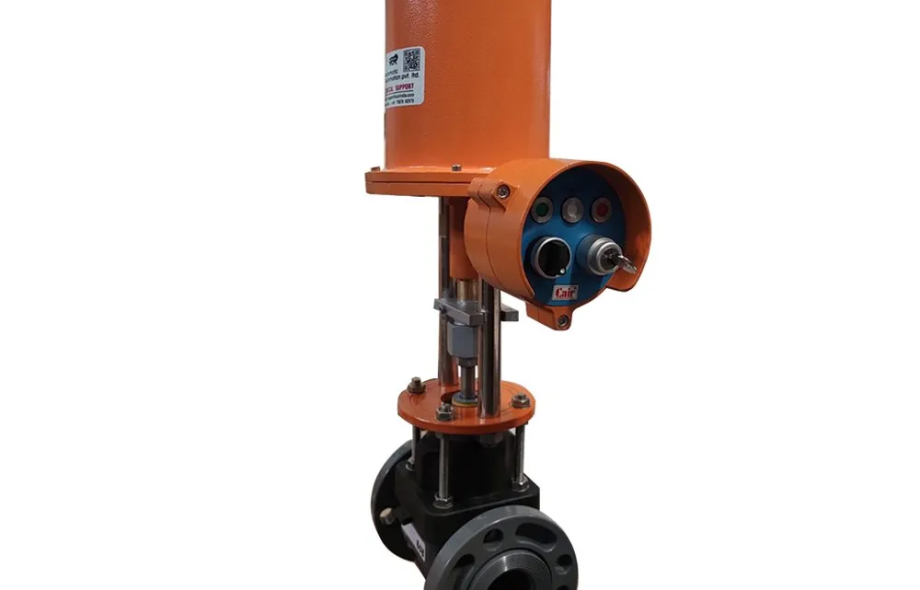Selecting the right electric actuator diaphragm valve is critical for ensuring optimal performance, safety, and reliability in various industrial applications.
These valves are widely used across multiple sectors, including water treatment, chemical processing, food and beverage, pharmaceuticals, and more.
In this article, we will explore key factors to consider when choosing the best electric actuator diaphragm valve for your specific needs. By understanding these considerations, businesses can make informed decisions that lead to efficient operations and reduced downtime.
Understanding Electric Actuator Diaphragm Valves
Before diving into the selection process, it’s important to understand what electric actuator diaphragm valves are and how they function.
These valves consist of a diaphragm, a flexible membrane that separates the flow of fluid or gas, and an electric actuator that automates the opening and closing of the valve.
The actuator receives an electric signal, which prompts it to adjust the diaphragm, controlling the flow rate and pressure of the fluid or gas passing through the system.
This automated operation makes them ideal for precision flow control, especially in complex or hazardous environments.
Factors to Consider When Selecting an Electric Actuator Diaphragm Valve
Material Compatibility
The first and foremost consideration is the material compatibility of the valve with the fluid or gas it will handle.
Diaphragm valves are available in various materials such as stainless steel, plastic, and elastomers, which should be chosen based on the chemical properties of the substance being controlled.
For instance, corrosive chemicals may require valves made of corrosion-resistant materials like PTFE (polytetrafluoroethylene) or EPDM (ethylene propylene diene monomer). Ensuring the material compatibility will enhance the valve’s durability and prevent leaks or failures.
Pressure and Temperature Ratings
Understanding the pressure and temperature conditions of your application is crucial in selecting the appropriate valve.
Electric actuator diaphragm valves are designed to operate within specific pressure and temperature ranges. Choosing a valve with a suitable rating ensures that it can withstand the operating conditions without compromising performance.
For high-pressure applications, ensure the valve has a robust design and materials that can endure the pressure. Similarly, if the application involves extreme temperatures, select a valve with temperature-resistant materials.
Flow Rate Requirements
The flow rate, or the amount of fluid passing through the valve per unit of time, is another key consideration. Electric actuator diaphragm valves are designed to handle varying flow rates, and selecting one that matches your system’s requirements is essential.
If the valve is too small, it could restrict flow and cause pressure build-up, while an oversized valve may lead to inefficient control and increased energy consumption. Conducting a thorough flow analysis and consulting with manufacturers can help in choosing the right valve size.
Control Accuracy and Responsiveness
In many industrial applications, precise flow control is crucial for maintaining product quality and safety. Electric actuator diaphragm valves offer varying degrees of control accuracy and responsiveness.
High-quality actuators provide fine control over the valve’s position, allowing for accurate adjustments to the flow rate. When selecting a valve, consider the level of control accuracy required for your application.
For processes that demand high precision, opt for valves with advanced actuator technologies that offer precise and rapid response to control signals.
Actuator Type and Power Supply
Electric actuators come in various types, such as on/off, modulating, and fail-safe. Choosing the right actuator type depends on the specific requirements of your application.
On/off actuators are suitable for applications that only need the valve to be fully open or closed, while modulating actuators are ideal for processes that require variable flow control. Additionally, consider the power supply needed to operate the actuator.
Ensure that the available electrical infrastructure can support the actuator’s power requirements to avoid operational issues.
Maintenance and Durability
The longevity and reliability of an electric actuator diaphragm valve depend on its maintenance requirements and durability. Look for valves designed for easy maintenance, with features like self-cleaning capabilities and accessible components.
Valves with robust construction and high-quality materials typically have longer service lives and require less frequent maintenance. Investing in a durable valve can reduce operational costs over time by minimizing the need for replacements and repairs.
Compliance with Industry Standards
In regulated industries such as pharmaceuticals, food and beverage, and water treatment, compliance with industry standards and certifications is critical.
Ensure that the electric actuator diaphragm valve you choose meets relevant industry standards, such as ISO, CE, or FDA approvals.
Compliance guarantees that the valve is designed and manufactured according to stringent quality and safety guidelines, ensuring reliability and regulatory adherence.
Conclusion
Selecting the best electric actuator diaphragm valve for your application involves considering several key factors, including material compatibility, pressure and temperature ratings, flow rate requirements, control accuracy, actuator type, maintenance needs, and industry compliance.
By thoroughly evaluating these factors, businesses can choose a valve that meets their specific needs, enhances operational efficiency, and ensures long-term reliability.
For companies looking for high-quality electric actuator diaphragm valves tailored to their needs, partnering with a trusted manufacturer is crucial.
Cair Euromatic offers a range of reliable and durable valves designed to meet the diverse requirements of industries in Ahmedabad and beyond. Reach out to Cair Euromatic for expert guidance and the best solutions for your flow control needs.

